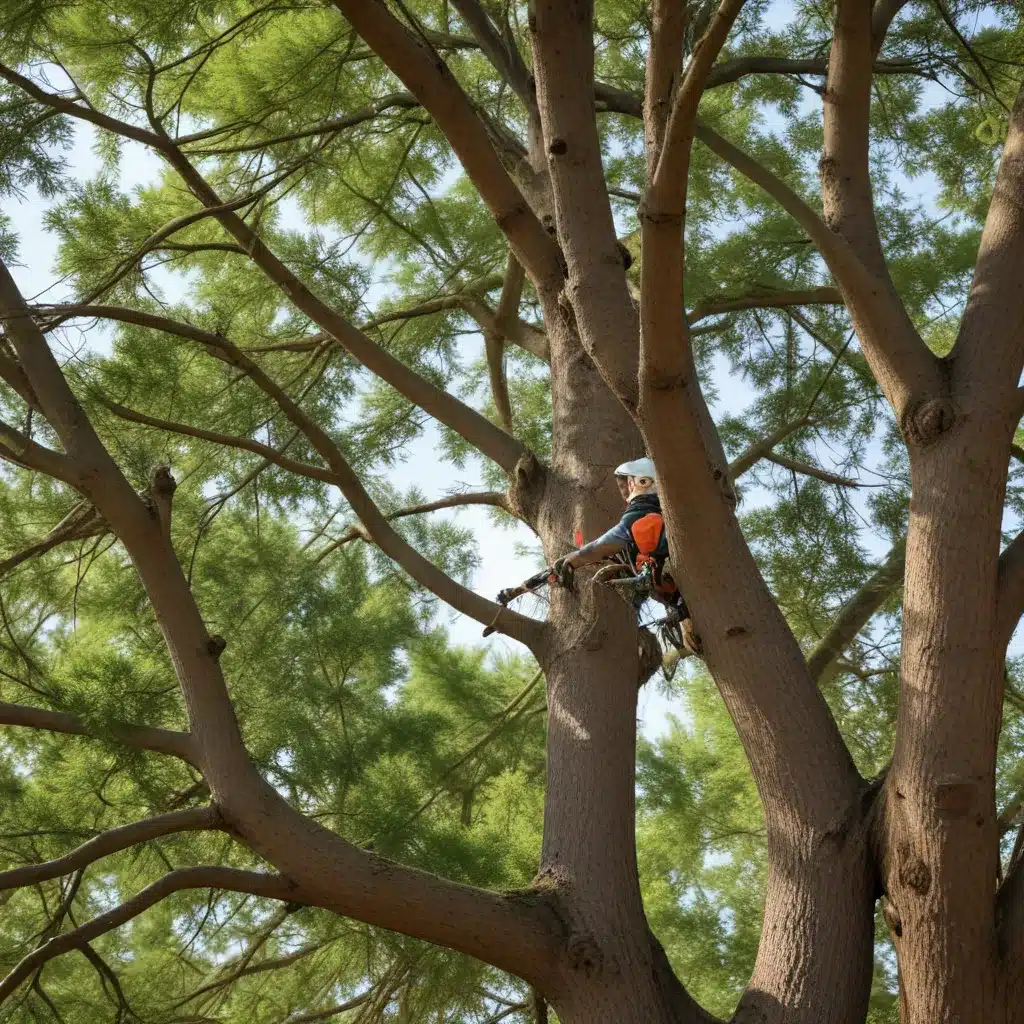
As dedicated tree care specialists at TriCounty Tree Care, we understand the intricate dance between the seasons and the health of your prized trees. Each phase of the annual cycle presents unique challenges and opportunities for nurturing your arboreal companions. By aligning your maintenance practices with nature’s rhythms, you can ensure your trees thrive, offering vibrant beauty and invaluable ecological benefits throughout the year.
Seasonal Considerations
Spring Preparation
As winter’s grip loosens, your trees awaken from dormancy, signaling the start of a new growing season. This is a critical time to prepare your trees for the months ahead. Pruning during the late winter or early spring, when the trees are still dormant, minimizes stress and promotes healthy growth. Focus on thinning out overcrowded branches, removing deadwood, and shaping the overall structure of the tree.
Alongside pruning, it’s essential to address any soil compaction around the root zone. Aeration helps improve water, air, and nutrient penetration, ensuring your trees have the resources they need to flourish. Consider applying a root care treatment to further support the belowground system.
Summer Upkeep
The summer months bring the greatest challenges for tree health, as heat and drought can place significant stress on your arboreal assets. Ensuring adequate hydration is a top priority during this season. Adopt a deep, infrequent watering regimen to encourage the development of deep, drought-resistant roots.
Vigilantly monitor your trees for signs of pests and diseases, which can thrive in the warm, humid conditions. Implementing integrated pest management (IPM) strategies can help mitigate damage while protecting beneficial organisms. Maintain a consistent mulching program to conserve soil moisture and suppress weed growth.
Fall Cleanup
As the days grow shorter and the air cools, your trees begin to prepare for winter’s respite. This is an opportune time to address structural concerns and fortify your trees for the cold months ahead. Perform any necessary pruning to remove dead, damaged, or poorly positioned branches, and consider applying root treatments to support the underground system.
Early leaf cleanup is crucial to prevent the development of fungal diseases that can flourish in damp, decaying matter. By removing fallen leaves and other debris, you create a more favorable environment for your trees.
Pruning Techniques
Proper pruning is a fundamental aspect of tree care, and the techniques employed can significantly impact the health and aesthetics of your trees. Thinning involves the selective removal of branches to improve air circulation, light penetration, and overall structure. Shaping, on the other hand, focuses on sculpting the tree’s form, enhancing its visual appeal and promoting balanced growth.
The removal of deadwood is a crucial practice, as it helps prevent the spread of disease and reduces the risk of branch failure. Arborists at TriCounty Tree Care are trained to identify and safely remove these problematic elements, ensuring the longevity and vitality of your trees.
Environmental Factors
Climate Adaptations
The climate in which your trees grow plays a vital role in their overall health and resilience. Temperature fluctuations and precipitation patterns can significantly impact a tree’s ability to thrive, and understanding these environmental factors is essential for tailoring your care regimen.
In regions with extreme temperature swings, for example, you may need to take additional measures to protect young or vulnerable trees from frost cracks or sun scald. Conversely, in areas with prolonged drought, your watering schedule and mulching practices become even more critical.
Soil Conditions
The health of your trees is inextricably linked to the quality of the soil in which they are rooted. Nutrient levels, pH, and drainage all contribute to the trees’ ability to absorb the resources they need for growth and vitality.
Regular soil testing can help you identify any imbalances or deficiencies, allowing you to make targeted adjustments through the application of organic amendments or specialized fertilizers. Maintaining optimal soil conditions is a fundamental aspect of ensuring your trees’ long-term success.
Growth Optimization
Pest and Disease Management
Vigilant monitoring and early intervention are key to preventing pests and diseases from compromising the health of your trees. Familiarize yourself with the common ailments that affect the species in your landscape, and learn to recognize the early warning signs.
Implementing IPM strategies, which combine cultural, biological, and, if necessary, judicious use of chemical controls, can help mitigate damage while protecting beneficial organisms. Enlisting the expertise of TriCounty Tree Care’s arborists can be invaluable in diagnosing and treating complex issues.
Fertilization Strategies
Providing your trees with the appropriate nutrients at the right time can significantly enhance their growth and resilience. Organic fertilizers, such as compost or bone meal, offer a slow-release, balanced approach that supports overall tree health.
The timing of fertilizer application is also crucial, with late winter or early spring often being the optimal window. Avoid heavy fertilization during the summer months, as this can lead to excessive, stress-inducing growth.
Sustainable Practices
Waste Recycling
As you maintain your trees throughout the seasons, you’ll inevitably generate a significant amount of organic waste, such as prunings and fallen leaves. Rather than sending this material to a landfill, consider chipping or composting it to create valuable mulch or soil amendments.
Not only does this divert waste from the waste stream, but it also helps to close the loop, returning essential nutrients to the soil and supporting the overall health of your landscape.
Ecosystem Preservation
When selecting trees for your property, prioritize native species that are well-adapted to the local climate and soil conditions. These trees not only require less maintenance but also provide vital habitat and food sources for native wildlife, helping to preserve the delicate balance of your local ecosystem.
By embracing a holistic, sustainable approach to tree care, you can ensure the long-term vitality of your arboreal assets while contributing to the overall ecological health of your community. Remember, the team at TriCounty Tree Care is always here to assist you in navigating the seasonal complexities of tree maintenance, providing expert guidance and personalized solutions tailored to your unique landscape.


